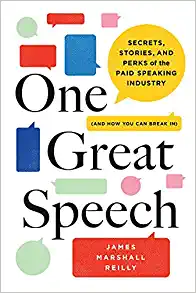In-Your-Neck-of-the-Woods Blogging for Business
Listening to the morning weather report on TV, I often hear Al Roker say, “That’s what’s going on around the country. Here’s what’s happening in your neck of the woods”.
In blogging for business, that Roker model is a good one to follow, we teach at Say It For You. Your blog is a way to educate leads and customers by helping them stay generally informed on industry trends and developments, Hubspot explains. Once you are perceived as an expert or “thought leader” in that industry or profession, you can then go on to explain your own products and services, and your very own “neck of the woods” approach.
Hubspot offers examples of blogs that describe the general industry climate before bringing matters down to a local level:
Manufacturing
Manufacturing blogs are used to inform readers about best practices news, and trends in manufacturing, supply chain distribution, and logistics. The Marlin Steel blog, for example, talks about what robotics and automation mean for US manufacturing jobs (national picture), but also provides information on how to use specific steel tools.
Healthcare
In Six Month Smiles’ Chair Time blog, industry experts, doctors, and hygienists write about developments in their field. Potential customers can learn about specific services they may be interested in paying for on a local level.
Ecommerce
The M.M. LaFleur blog discusses general issues of women in the workplace, but then narrows down to specific advice about what to wear to different business occasions.
In fact, the function of “news” in blogs is to inform readers of “what’s-going-on-and-how-do-we-fit-in”. In a blog post, you might cite material from the news story, relating it to new developments in your own industry or field. The idea is not to regurgitate what’s already been said, but to showcase your own expertise and experience, offering a new perspective on that topic.
According to strategist Neen James in Speaker Magazine, a Subject Matter Expert or SME (pronounced “smee”) knows something. A thought leader, by contrast, is known for something. In their blog content, business owners and professional practitioners can first bring their audiences up to speed on general industry issues and developments. Through “in-your-neck-of-the-woods blogging for business,” they then become known for translating that knowledge into usable, actionable steps their readers can follow.






Follow us online!